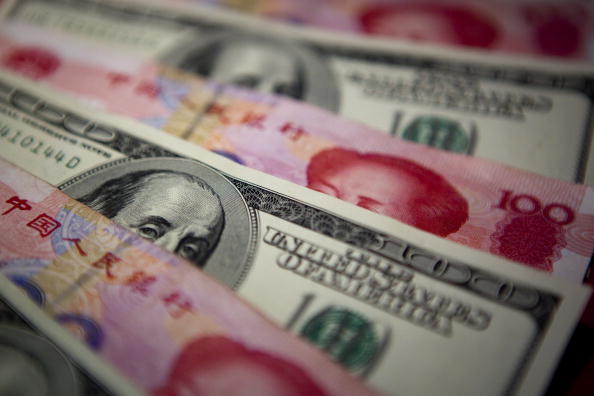UAE Looks East, Eyes Larger Trade With China
The UAE looks to grab a larger share of trade with China, outwitting its Gulf peers.

With an economy worth $9 trillion and growth of 7.7 per cent in 2013, it is hard not to be bullish on China’s prospects.
The trade and investment links between this Asian giant and the GCC have also grown considerably thanks to its oil imports mainly supplied by the Gulf states.
There has been a 50-fold increase in China’s direct trade with the Middle East and Africa, according to research by British lender HSBC, with investment from Chinese corporates into the MENA region totalling $30 billion in 2013, up from $2.4 billion in 2005.
About 22 per cent of Chinese firms’ global investment was directed towards the region.
Inter-regional trade in the future also looks promising with ambitious targets set by both countries.
In his opening address at the China- Arab States Cooperation in June 2014, China’s president Xi Jinping said that the country is aiming to increase its trade volumes with the region of $240 billion in 2013 to $600 million in the coming decade.
He also called upon the Arab states to resurrect the ancient Silk Road, a trade route connecting the Mediterrean with the East via the Gulf.
The UAE too is looking to benefit from China’s surging economic growth. Trade between China and the UAE grew by 14 per cent year-on- year to $46 billion in 2013, according to the UAE’s Ministry of Economy.
Further growth was seen in the first nine months of 2014 with trade rising a quarter to $35 billion. Officials say there is room to boost ties further.
“In terms of trade between two countries, there is the potential to double the number. I think we can do much better especially with the expansion of ports in Jebel Ali and Abu Dhabi,” Abdullah Al Saleh, undersecretary to the UAE’s Ministry of Economy said during the Boao Forum for Asia Financial Cooperation Conference in Dubai.
“The rail network that will connect the ports together will give the Chinese exporters facilities to use the UAE as a hub for distribution for the region.”
Al Saleh said there was room to even out the trade balance, which is heavily titled to one side. UAE exports to China currently represent less than 20 per cent of China’s imports, according to the official, with the potential to double this number if trade is diversified.
“In the UAE, we are looking to the Chinese market as a potential market for our production, especially for petrochemicals. This is the main product that we are exporting now to China and we will double the amount of production of petrochemicals – becoming a main source of export to the Chinese market.”
ROADBLOCKS TO INVESTMENT
Although Sino-UAE trade is growing at a healthy rate, there are a host of practical difficulties UAE companies, especially in the financial sector, face when investing in China, and vice versa.
UAE officials have previously called on the Chinese government to ease restrictions and regulation of foreign firms wanting to operate in the country.
“Regulations are very tough for UAE banks to go and set up there. Some rules relating to the financial sector in China don’t allow our banks to fully operate in the country unless they open a representative office in China for three years,” said Al Saleh.
Regulations are preventing UAE banks and financial institutions from tapping into demand for Islamic finance services in China, which is home to about 30 million Muslims, he argued.
But there are also restrictions on Chinese investments in the UAE.
“Chinese companies focus only on export, import activities and in technology. There are some successful infrastructure projects in the UAE done by the Chinese companies but I don’t see much participation (by Chinese firms) in that area,”Al Saleh added.
Chinese firms looking to operate in the UAE also need to be well connected with the market and the culture in the emirates, the official said.
“They (Chinese firms) want to have contracts with the government, which is not the way we are doing business here.
Almost 60 per cent of the commercial activities are under the private sector. So if they need to be connected with the market, then they need to have a representative office here to study the market, to be connected with the commercial activities and introduce themselves to local firms. They can also have partnerships with local investors.”
INVESTMENT FUND
Despite reservations about an imbalance in Sino-UAE trade and investment, the UAE is leaving no stone unturned to build its relationship with China. This includes following in the footsteps of Gulf neighbour Qatar, which launched a joint investment fund with state-owned Chinese firm CITIC Group in November 2014.
Al Saleh confirmed that China and the UAE too will be setting up a joint investment fund but did not divulge any details about its formal establishment.
The fund, when operational, will look to invest in clean energy – a common area of interest. However, Al Saleh did not specify whether it would focus on developing the UAE’s clean energy sector or in other parts of the world.
“The UAE is a leading country (investing) in green energy. We are investing here and diversifying our sources of energy. But at the same time, we are also an investor abroad in renewable energy.”
Cooperation in financing projects through a joint fund is expected to boost investor confidence, and keep competition in the financial market high, which is good for trade and growth, he argued.
“Both countries have enough liquidity and they also have some of the largest sovereign wealth funds in the world. We need to inject this liquidity to finance more projects,” he said justifying the formation of a fund.
